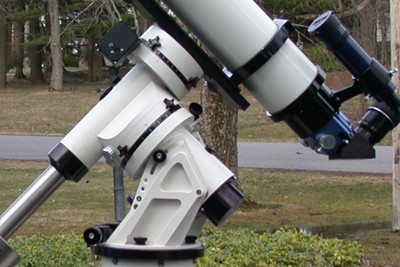To use telescopes, they must be supported by a special kind of stand, or mount. Like a tripod for video cameras. Otherwise, you would have to hold it all the time. They help the viewer to keep the telescope steady, point it and adjust it at the celestial bodies every time they change positions and to help you to free your hand for other important activities (note-taking, drawing, focusing, etc).
 And there are also other types of telescope mounts. One of them is the German equatorial mount. It is T-shaped, and has two bars: the upper bar is called the declination axis, and the lower bar is called the right ascension axis. The former is aligned parallel to the Earth's pole or axis of rotation. There is also a counterweight in the right ascension axis, to balance the telescope. In this way, the German equatorial mount allows the telescope to follow the movement of a star in an arc-like, smooth pathway.
And there are also other types of telescope mounts. One of them is the German equatorial mount. It is T-shaped, and has two bars: the upper bar is called the declination axis, and the lower bar is called the right ascension axis. The former is aligned parallel to the Earth's pole or axis of rotation. There is also a counterweight in the right ascension axis, to balance the telescope. In this way, the German equatorial mount allows the telescope to follow the movement of a star in an arc-like, smooth pathway.
Most scientists and astronomy hobbyists prefer the German equatorial mount because of its ability to track stars at high magnifications. Following a celestial body is easy on this because of the arc-like pathway of the telescope, because of the polar alignment.
